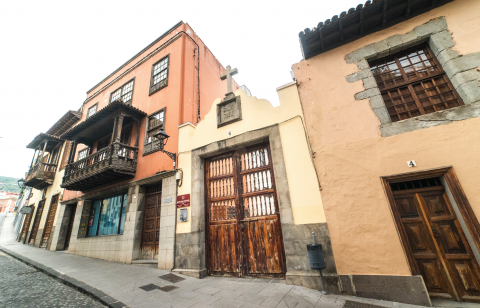7. Municipal Cemetery

At number 6 on Calle San Francisco you’ll find the Municipal Cemetery.
It is accessed along a long path down a hill from the entrance gate, which goes completely unnoticed by visitors who don’t know its location. If you arrive during opening hours, walk down the hill until you reach the chapel and the first tombs.
The cemetery was created in the first third of the 19th century. It was designed in the romantic style, resembling a garden, by the sculptor Fernando Estévez, whose house you visited earlier.
Once at the bottom, walk towards the chapel and observe the simplicity of the area. The current Crucified Christ was brought to replace the previous one, which burned in a fire on the Day of the Dead in 1986. You can still see the burn marks of the fire on the chapel’s stone carved door. This doorway belonged to the convent of the Poor Clares, which became public property in the 19th century. It was reused to ennoble the municipal cemetery, which was declared an Asset of Cultural Interest in 2005.
The oldest parts of this cemetery are the chapel, the line of pantheons in front of it, and the interior perimeter. Walk along the cemetery’s borders to discover some of the spectacular tombs and magnificent sculptures.
One of the most interesting stories about the cemetery is that the Church declared it to be a profane place at the end of the 19th century. Not a single member of the clergy went through the front gate for 24 years, not even to officiate at funerals. This was because two figures who were considered enemies of the Church were buried here: Nicolás José Hernández and Diego Ponte del Castillo, eighth Marquis of the Quinta Roja, who were accused of being Freemasons. The Catholic Church has traditionally associated Freemasonry with obscurantism and pagan rites.
Retrace your steps back to the front gate to continue your tour. The next point on the tour will be Plaza San Francisco, which is located a few metres up from the cemetery’s entrance. Sit on the stone bench in front of the two cypress trees to listen to the next track.
